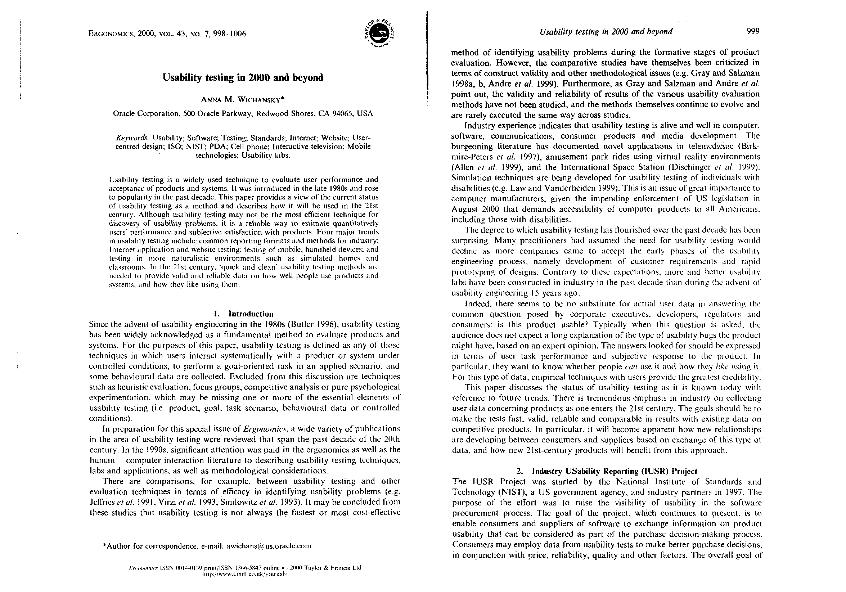Usability testing in 2000 and beyond

Contenido multimedia no disponible por derechos de autor o por acceso restringido. Contacte con la institución para más información.
| Tag | 1 | 2 | Valor |
|---|---|---|---|
| LDR | 00000nab a2200000 i 4500 | ||
| 001 | MAP20071501815 | ||
| 003 | MAP | ||
| 005 | 20220912145503.0 | ||
| 008 | 010906e20000701gbr|||| | |00010|eng d | ||
| 040 | $aMAP$bspa | ||
| 084 | $a875 | ||
| 100 | 1 | $0MAPA20080235574$aWichansky, Anna M. | |
| 245 | 1 | 0 | $aUsability testing in 2000 and beyond$cAnna M. Wichansky |
| 520 | 8 | $aUsability testing is a widely used technique to evaluate user performance and acceptance of products and systems. It was introduced in the late 1980s and rose to popularity in the past decade. This paper provides a view of current status of usability testing as a method and describes how it will be used in the 21st century. Although usability testing may not be the most efficient technique for discovery of usability problems, it is a reliable way to estimate quantitatively user's performance and subjetive satisfaction with products. Four major trends in usability testing include: common reporting formats and methods for industry; Internet application and website testing; testing of mobile, handheld devices; and testing in more naturalistic environments such as simulated homes and classrooms. In the 21st century, "quick and clean" usability testing methods are needed to provide valid and reliable data on how well people use products and systems, and how they like using them. | |
| 650 | 1 | 1 | $0MAPA20080550653$aErgonomía |
| 650 | 1 | 1 | $0MAPA20080604202$aTeoría de la utilidad |
| 650 | 1 | 1 | $0MAPA20080549084$aSoftware |
| 650 | 1 | 1 | $0MAPA20080539948$aTests |
| 650 | 1 | 1 | $0MAPA20080555597$aNormas ISO |
| 650 | 1 | 1 | $0MAPA20080547738$aInternet |
| 650 | 1 | 1 | $0MAPA20080610043$aCreación de páginas web |
| 650 | 1 | 1 | $0MAPA20080574109$aTelefonía móvil |
| 650 | 1 | 1 | $0MAPA20080615574$aTecnologías interactivas |
| 650 | $0MAPA20080595296$aComercio electrónico | ||
| 773 | 0 | $dLondon [etc.]$gVol. 43 nº 7, July 2000 ; p. 998-1006$tErgonomics |

